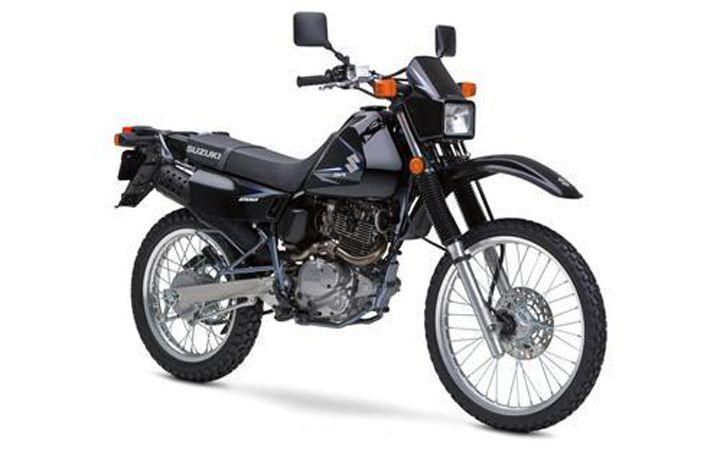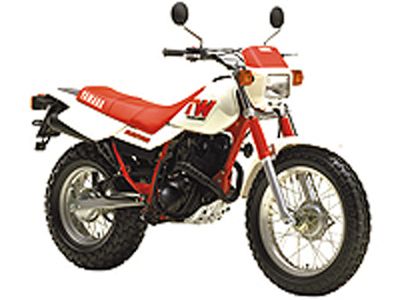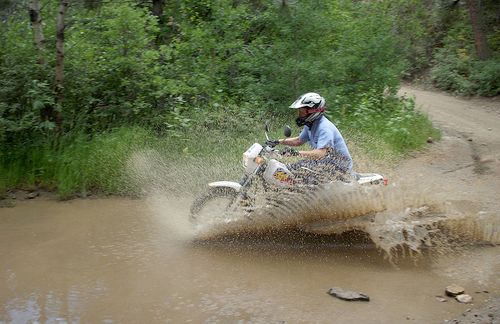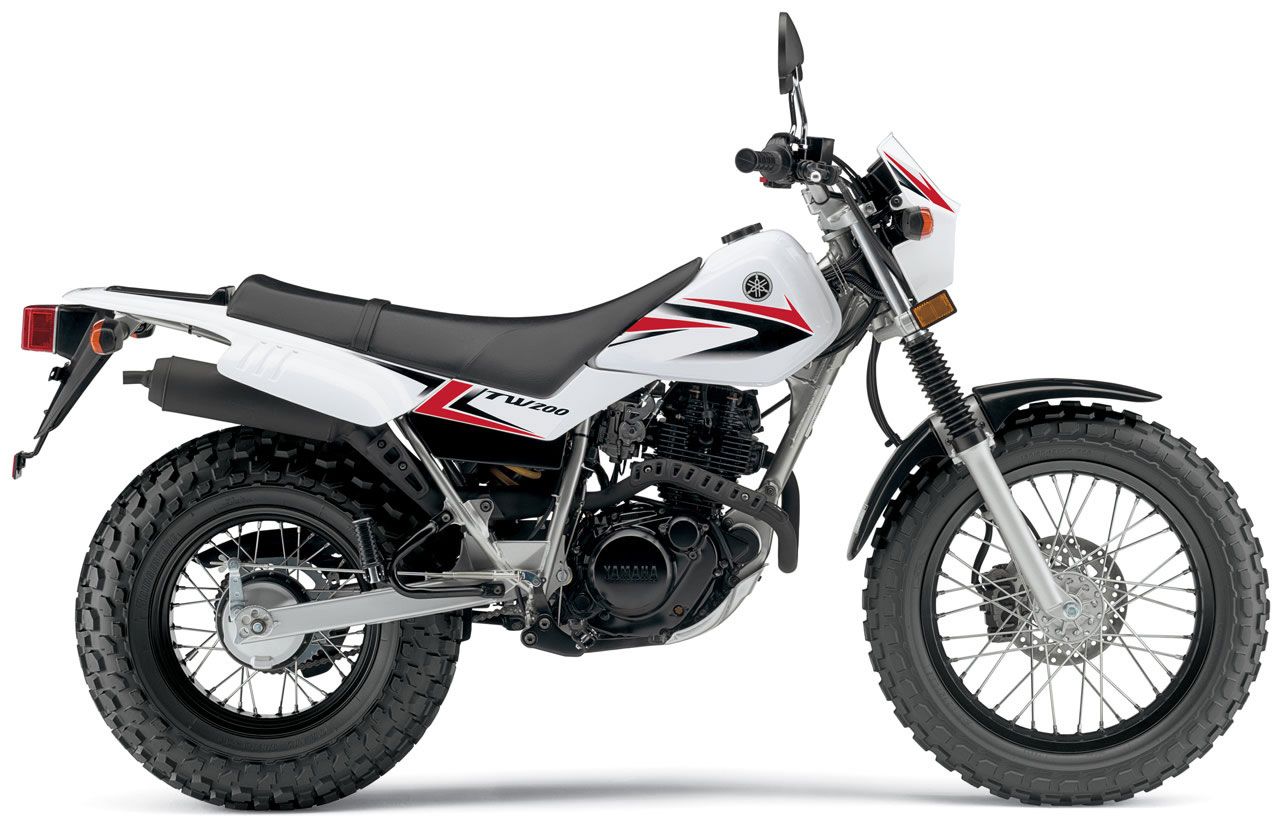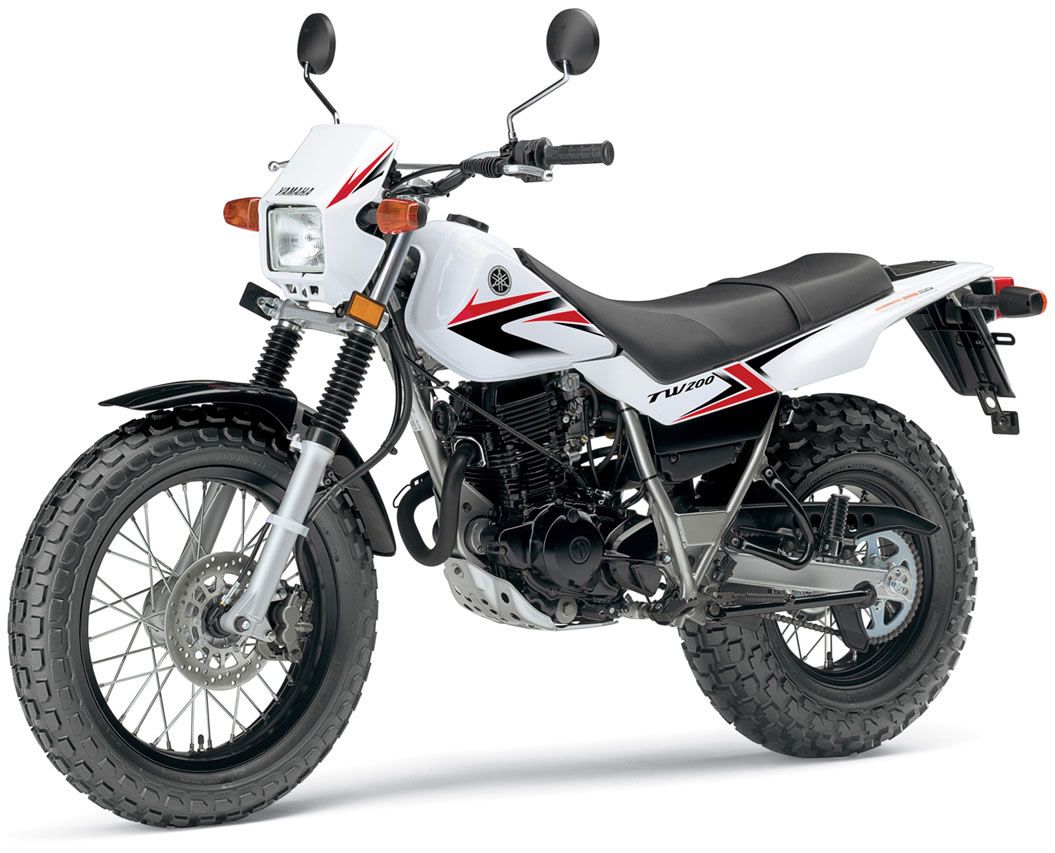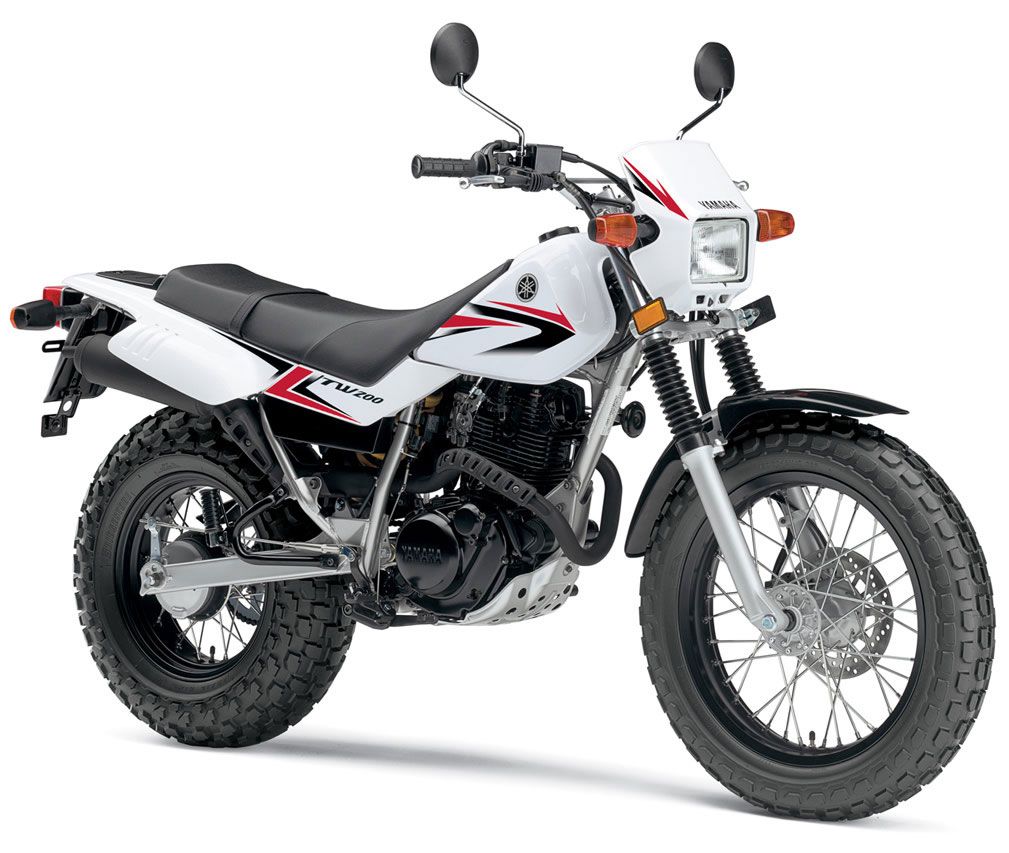Impossible to miss in Yamaha’s 2010 dual-sport lineup is the TW200, an easy to spot and recognize motorcycle due to its beefy tires. This bike carries on without change, showing that Yamaha can be as constant as it is fun. Being around for decades, the Yamaha TW200 has surely got the recipe right from the very beginnings, and this is just a happy career that we’re looking at.
2010 Yamaha TW200
- Make: Array
- Model: 2010 Yamaha TW200
- Engine/Motor: air-cooled SOHC 4-stroke; 2 valves
- Horsepower: 16 hp (11.9 kW) @ 8000 rpm
- Torque: 15 Nm (11.1 ft. lbs) @ 7000 rpm
- Transmission: Constant-mesh 5-speed; multiplate wet clutch
- [do not use] Vehicle Model: Array
Introduction
It is amazing how Yamaha still enjoys the success of the TW200 without doing much to the actual product for a while, but that is just testimony of the bike’s simple and yet great engineering. As “complex” as it could get, the 196cc air-cooled SOHC four-stroke, two-valves engine does the job spotless in co-op with the five-speed gearbox. Although it looks like a play bike for adults, the multiplate wet clutch requires a little bit of experience before finding your place on the TW's seat.
Still featuring a rear 110mm drum brake (front is a 220 mm single disc), the TW isn’t quite progress itself but why change it if it works just fine like this?
History
Yamaha first produced and sold the TW200 to the U.S. market and only afterwards for the Japanese one in the year 1987. This is also the time when the bike was to become famous thanks to Shinji Kazama’s trip to the North Pole, during which he used the TW as the only mean of transportation.
Backed up by the air-cooled 196cc four-stroke single-cylinder engine, the bike wasn’t a blast, but it surely got the job done each and every time, something that radically contributed at making a big name out of the TW200 designation.
Before taking a brake from being produced in 1991, there were no changes made to the bike. But a decade later, Yamaha decided that it was time to revamp the funny looking thing and that implied a series of changes that brought it up to date, but retained the essential. An electric starter now made life easier on it, a disc front brake made emergency braking safer and the CV-type carburetor got the best out of that small thumper. Also, a 55 watt headlight replaced the previous 40 watt one so that the bike would light up its future days.
No significant changes have further been made. It looks like history is being rewritten.
Competition
The Suzuki DR200SE is a dual-sport machine similar in many aspects to the TW200. For starters the air-cooled, OHC four-stroke engine fed through a Mikuni BST31SS carburetor and also mated to a five-speed gearbox is similar to the one found on the small Yamaha, but a little bit more potent if you ask me. It soaks less miles per gallon, but brings a plus of excitement in the dual-sport arena.
The Suzuki isn’t much of a revised piece of machinery for 2009 (yes, it’s still a 2009 model) as it comes with front disc and rear drum brakes.
In what concerns the visual, a square headlight makes it look similar to the TW, but not the mirrors. The bigger, thinner wheels made it look more like an off-road capability and its 249 pounds contribute at ease of maneuvering and versatility on all kinds of terrains. And the Suzuki’s price – $4,199 – definitely makes it THE competitor for the Yamaha TW200. You’ll see why by further reading this article.
Exterior
But this last has weapons to fight back. With those massive tires and kids-bike look, the TW200 makes an awful good impression from the first time you lay eyes on it. In fact, if I was to name a two-wheeled equivalent for the Beach Buggy, this would surely be it.
It may not have the round headlight, but it still looks like a sand-spreader to me. And the mirrors help a lot at creating that appearance, maybe as much as the tires.
No side plates on this baby, just some decals on the sides of the tank. The headlight is nicely contoured by the small fairing and the front fender stay close to the tire as we all can imagine how dirty can riding become on this Yamaha model.
The flat seat is perfectly integrated into the bodywork and the rear fender seems to have troubles in offering protection so it gets helped by what would normally be the number plates.
Two colors dominate the scene: black, on the mechanics, rims, front fender and seat, and white, on the plastics, while the black/red graphics are the details that set the 2010 model year apart from the previous one.
-----
Test Ride
The smallest Yamaha dual-sport motorcycle is extremely fun to ride and misses no chance to show off both its street and off-road qualities even though, apparently, it is meant to teach beginners the secrecies of riding. In fact, it is well worth using long after developing those much needed riding skills. At least that’s the impression it leaves you with after swinging your leg off its seat.
Versatility is this bike’s middle name and, unlike bigger models in this category, riding feels very easy and natural. Accommodations are great and even small riders will have no problems flat footing the ground and moving TW’s 279 lbs wet weight around the parking lot or in the back yard. The 31.1 inches seat height also helps avoiding slow speed tip-overs and provides extra confidence.
Practical and initiative, the TW200 will soon have its riders ready for commuting and traversing rough stretches of ground. The seat feels nice and comfy even after several hours of riding and because the average cruising speed on the freeway is 60 mph, there isn’t much wind protection required.
The 196cc air-cooled, SOHC four-stroke; two-valves engine is sufficiently powerful not to disappoint, but don’t expect hard accelerating rounds which will propel you in front of all traffic participants. Most cars will easily pass the TW200 by, no matter how skilled the rider is with the constant-mesh five-speed gearbox. But, at least it gets awesome mileage (78 mpg) and it only requires a 1.8 gallons tank.
But we weren’t willing to keep those big fat tires clean as they are for pure off-road fun. Without a doubt, the trails is where the TW200 will feel most at home and although the suspensions feature only 6.3 inches of travel front and 5.9 inches of travel rear, a smart rider will deflate those tires a little bit and get more bumps absorption and grip.
Like on all great trail companions, the time passes fast on the TW and the bike seems like it could go on and on forever. The engine and tranny form a very reliable package, while the chassis is light and resistant in its simplicity. So after gaining a little bit of courage, a slop that looks threatening at first will become inviting and the change to get home soaked is nought.
Braking performance is ensured by a hydraulic front 220 mm disc and a 110 mm rear drum. So the TW brakes are highly effective mostly because they don’t have much weight to stop, but I also happened to make a few spins with a female passenger in the back and I didn’t felt like I needed more stopping power when she got scared of the slippery rocks ahead and needed to stop.
The bike is also perfect for riding on the beach, so if you live near the ocean it is well worth catching the morning breeze during weekends.
Price
In yet another point of view, Yamaha remains strong on its positions. Already available from September as next year’s model, it starts at a base MSRP of $4,190, which makes it even more competitive in relation to the Suzuki DR200SE.
Conclusion
The adequate solution for both trail and street riding, the Yamaha TW200 gets awesome mpg and can be a fun way of dealing with your commuting problems. The only thing I don’t advise you to do is to request more than it can supply, because disappointment won’t bother appearing and you’ll soon be facing the hard task of looking for a more potent dual-sport bike. Yamaha has much to offer, but keeping an open eye and thinking on what you’re going to do with this bike is what we recommend.
-----
SPECIFICATIONS
Engine and Transmission
Type: 196cc air-cooled SOHC 4-stroke; 2 valves
Bore x Stroke: 67.0mm x 55.7mm
Compression Ratio: 9.5:1
Fuel Delivery: Mikuni® 28mm
Ignition: CDI
Transmission: Constant-mesh 5-speed; multiplate wet clutch
Final Drive: Chain
Chassis and Dimensions
Suspension/Front: Telescopic fork; 6.3-in travel
Suspension/Rear: Single shock; 5.9-in travel
Brakes/Front: 220mm single disc
Brakes/Rear: 110mm Drum
Tires/Front: 130/80-18
Tires/Rear: 180/80-14
Length: 82.3 in
Width: 32.3 in
Height: 44.1 in
Seat Height: 31.1 in
Wheelbase: 52.2 in
Ground Clearance: 10.4 in
Fuel Capacity: 1.8 gal
Fuel Economy: 78 mpg
Wet Weight: 279 lb
Other
Warranty: 1 Year (Limited Factory Warranty)
Features & Benefits
Key Features:
Engine:
Chassis/Suspension:
Additional Features:


